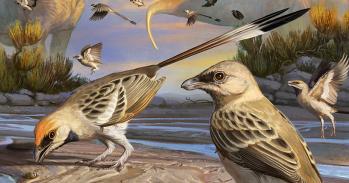
African national parks such as Masai Mara and the Serengeti have seen populations of large mammals decline by up to 59 per cent, Cambridge researchers have warned.
African national parks such as Masai Mara and the Serengeti have seen populations of large mammals decline by up to 59 per cent, Cambridge researchers have warned.
Although the results indicate that African national parks have generally failed to maintain their populations of large mammals, the situation outside the parks is almost undoubtedly worse. Many species like wild dog and rhino are practically extinct outside national parks.
Ian Craigie
Thousands of tourists visit these parks each year hoping to spot Africa's 'Big Five' - lion, elephant, buffalo, leopard and rhino - but the research shows that urgent efforts are needed to secure the parks' future and their role in tourism.
Scientists from the University of Cambridge and the Zoological Society of London (ZSL) created an index of change in population abundance for dozens of species in 78 protected areas throughout Africa.
The index revealed an average decline of almost 60 per cent in the population abundance of 69 key species including lion, wildebeest, giraffe, buffalo and zebra between 1970 and 2005.
The study found large variations in different regions, with populations increasing in southern Africa but declining by more than half in East Africa and by 85 per cent in West Africa. The massive declines in West Africa are probably down to a lack of financial and personnel resources, high rates of habitat degradation and the growing bushmeat trade, the researchers say.
Despite the severe losses, the rate of decline has slowed over time, indicating that management of the areas has been gradually improving - but more support is needed.
According to Ian Craigie of the Department of Zoology, who lead the study: "Although the results indicate that African national parks have generally failed to maintain their populations of large mammals, the situation outside the parks is almost undoubtedly worse. Many species like wild dog and rhino are practically extinct outside national parks."
Director of ZSL Conservation Programmes, Jonathan Baillie, added: "The results are far worse then we imagined, but the increasing population trends in southern Africa provide hope and demonstrate that protected areas can be very effective for conserving large mammals if properly resourced."
The results are published this week in Biological Conservation and the research was funded by NERC and UNEP-WCMC.
This work is licensed under a Creative Commons Licence. If you use this content on your site please link back to this page.





